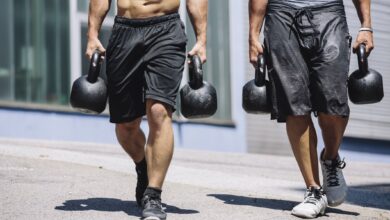5 Must-Do Exercises to Strengthen Your Lower Back
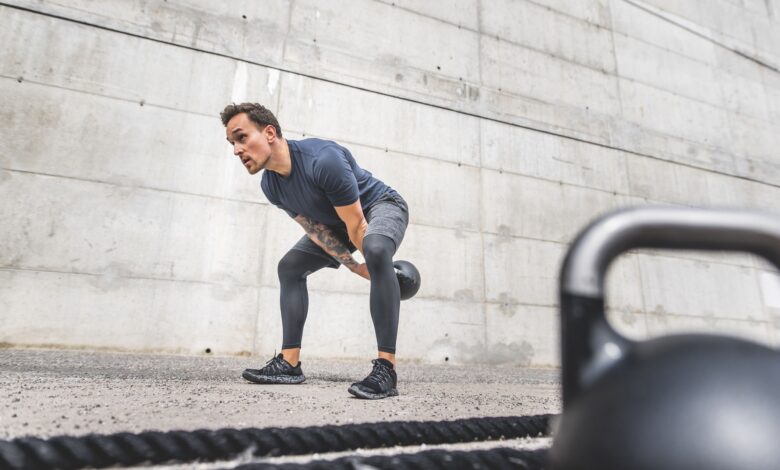
IT’S EASY TO forget about your lower back—until you get to the point where it’s hurting. To avoid that pain, you need to be strengthening your core.
The core is more than just your abs, after all—it enables movement and supports the spine. Your lower back is part of this muscle group. But if you walk around the gym, you’re more likely to see other guys repping out situps, crunches, and leg lifts to train the core. They’re focused on targeting the rectus abdominis, or six-pack muscles. For a complete core workout, you should be targeting lower back muscles, too.
Worries about pain and soreness of the low back may divert people from actually targeting it, says David Otey, C.S.C.S. and Men’s Health Advisory Board member. If we don’t train this crucial spot, though, “the weakest point will begin to give out,” which may cause more problems in the long run. Here, Otey and Ebenezer Samuel, C.S.C.S., MH fitness director guide through 7 exercises we can add to our routine that will help strengthen the lower back.
5 Exercises Your Low Back Needs
45 Degree Extension
3 to 4 sets of 15 reps
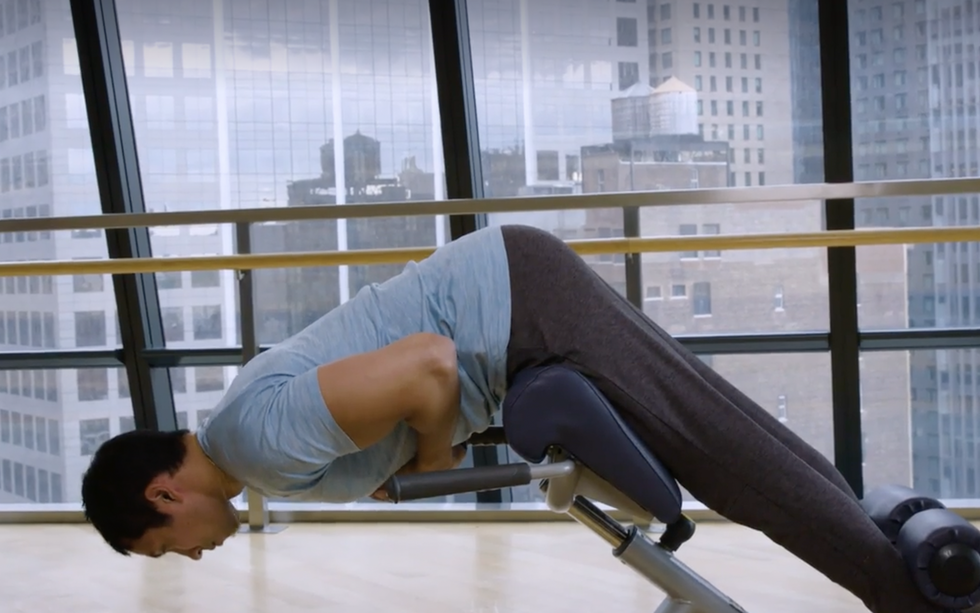
The low back and the hips work in tandem, and this exercise emulates that. The key to allowing the hip to engage is ensuring that you maintain a bit of rigidity through the spine. Focus on not allowing your spine to round out so that almost all of your movement comes through low back and hip extension. “It’s a baseline exercise to work on getting that lower back moving from folding forward to getting all the way up through extension, but it’s going to play a huge role in a lot of other lifts that we do,” Otey says.
It’s important to identify the difference between the feeling of fatigue and the feeling of pain in this movement. It’s safe and okay to work through feelings of fatigue, as that’s how we gain strength. If there’s any kind of shooting pain or aches, then see a specialist to get an individualized evaluation.
Bird Dog
3 to 4 sets of 8 reps on each side
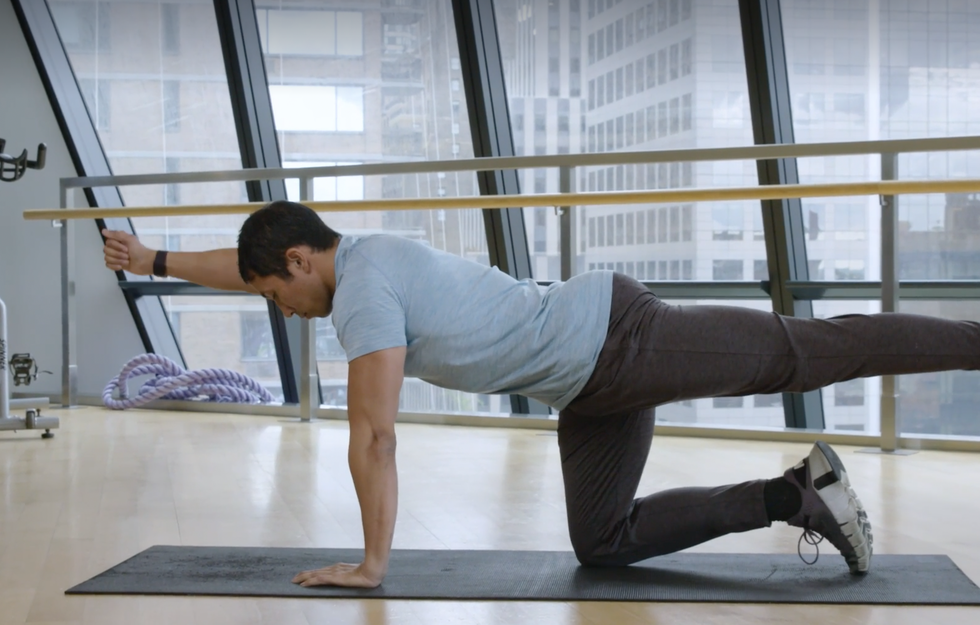
There’s value in simplicity. This is a simple movement that may not look like much, but it creates great baseline strength throughout the lower back. This will build stability throughout the spine and low back, ultimately allowing you to perform more athletically in other movements. This movements “sets the foundation” that allows us to add weight to other exercises down the road, Otey says.
“The goal here is basically to make the move look easy,” Samuel says. Stay mindful through each bit of this motion, making sure that you’re not allowing your hips to drop to one side when the leg gets extended out. Take your time to stay conscious about these things.
Good Morning
3 to 4 sets of 6 to 8 reps
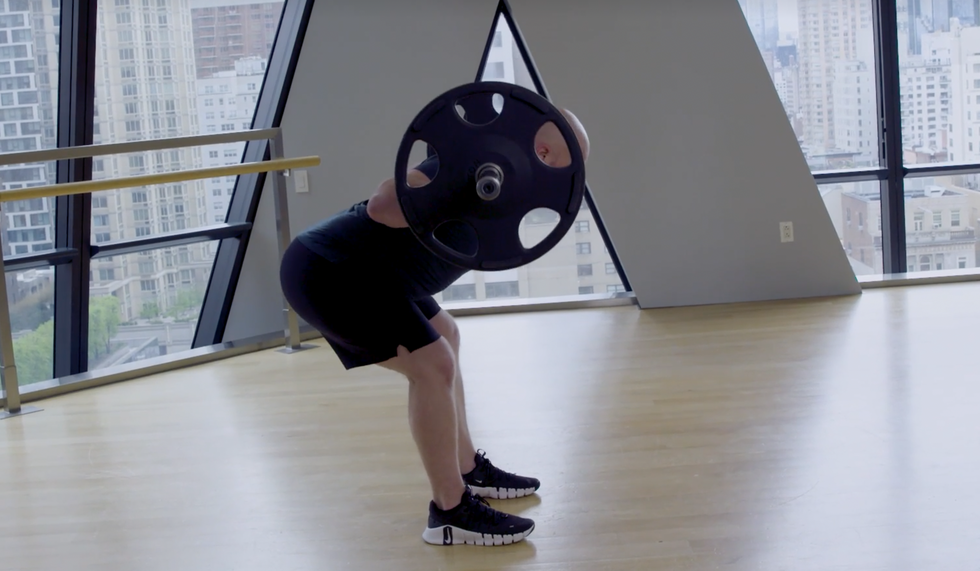
The good morning is a hip-hinging motion that will place significant stress on the lower back when loaded up with a barbell or kettlebell. As you descend down, the low back has to work extra hard to maintain control of the force pressing against your mid-back by the weight. Similar to the bird dog, take these slow and steady to get a feel for loading weight.
Romanian Deadlift
3 to 4 sets of 8 to 12 reps
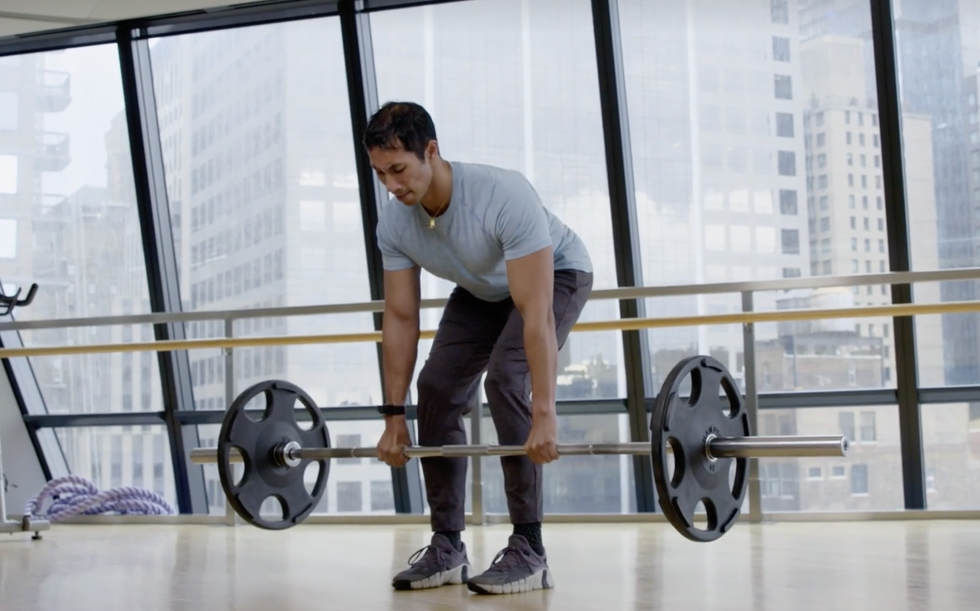
This is where things pop up a notch. We’re going from loading just a little bit to being able to move big weight to build strength. The lowest portion of the movement, when the hips are flexed backwards, is when the most stress will hit the low back. Hang out in this position for a few seconds, Samuel says, to understand the tension being held before standing back up. That small portion of time is where you’re going to build the most strength through your low back, as the glutes power a majority of the energy needed for the drive that returns you to standing.
Kettlebell Swing
3 to 4 sets of 30 seconds, aiming for 8 to 10 reps

The lower back supports more than just slow, steady lifts. Many quicker movements depend on it as well. Samuel notes that the lower back plays a big role in acceleration (the speeding up) and the deceleration (the slowing down) of the flexion and extension of our hips and spine. That makes the kettlebell swing a great exercise for training the dynamic aspect of low back strength.
The weight you’re working with will determine how you approach your sets. If you have a lighter kettlebell, think about working for 30 seconds rather than aiming for a rep range. If you have a heavier kettlebell, only work to about 8 to 10 reps.
Side Planks
2 to 3 sets each side for 40 seconds
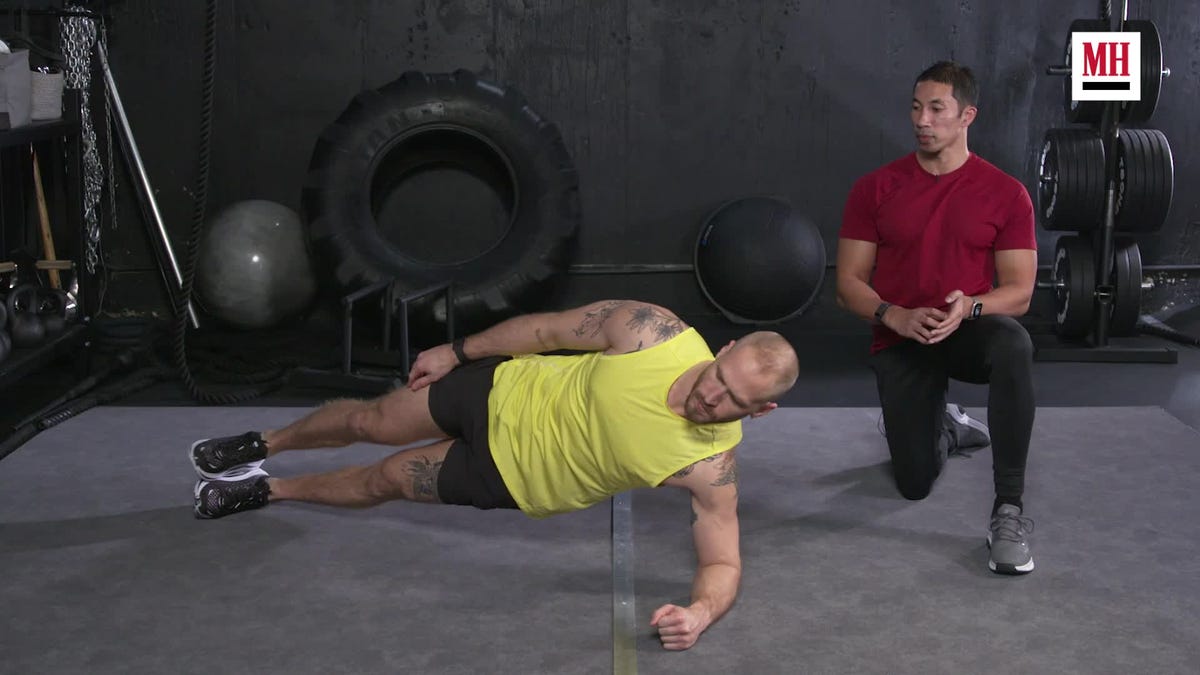
Just like the bird dog, the side plank will help you build a solid foundation. The strength of your oblique muscles, or the muscles along the sides of your core, contribute to the strength of your lower back. “Side planks strengthen the deep core muscles which strengthen the lower back by stabilizing the spine,” says Dan Giordano, P.T., D.P.T., of Bespoke Physical Therapy and MH advisor.
Side planks are a move you can do anywhere, anytime. Make sure the hips stay lifted, keeping the spine as straight as possible. If you’re just starting off, bring down the intensity by bending the bottom leg at the knee.
Glute Bridge Marches
2 to 3 sets for 12 to 16 alternating reps
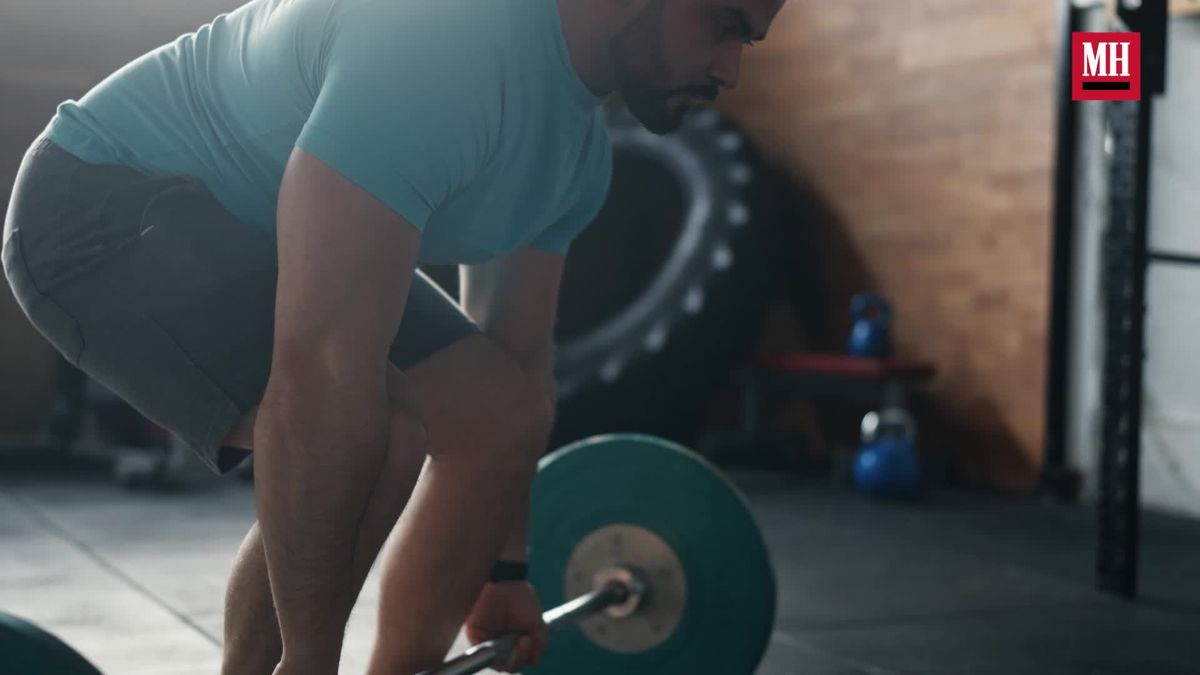
Start with the basics before you jump into heavy deadlifts or squats—especially if you already experience some level of low back pain. Start with glute bridge marches, says Giordano. “Alternating leg lifts while maintaining a bridge position can help you improve pelvic stability, which helps strengthen the lower back.”
Get into a glute bridge position. Lift the hips, and slowly shift all your weight onto one side and pick up the other foot off the ground. Hold there for a second before slowly returning that foot to the ground. Take your time moving through the reps. Try to keep the hips as stable as possible as you swap legs.
